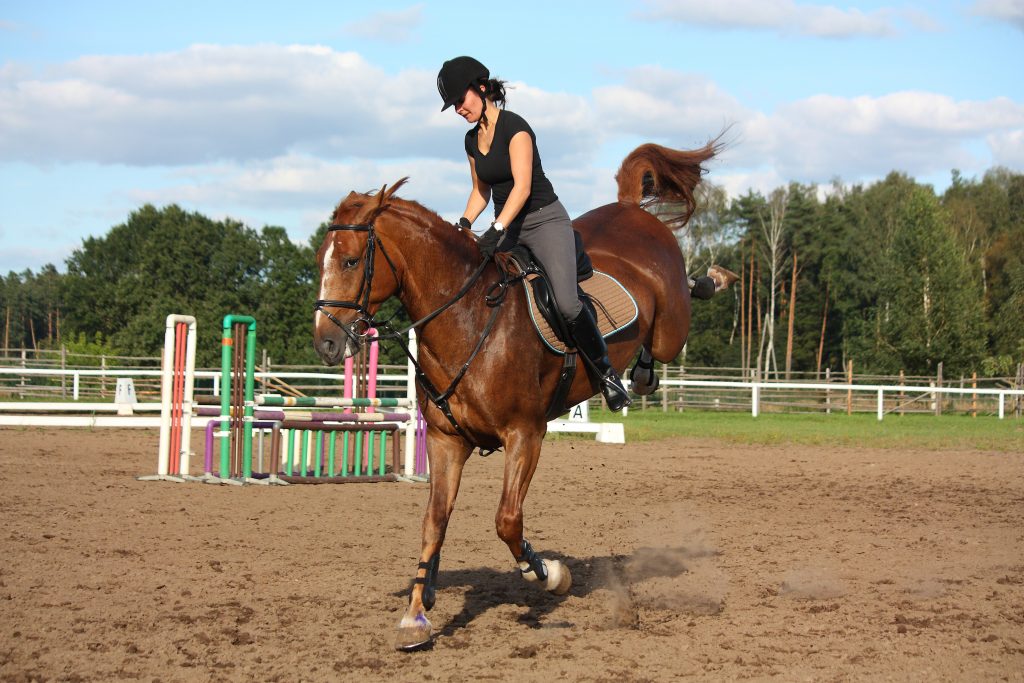Advice and Information
Sarcoids in Horses
By Dr Callum Macleod-Andrew, BSc BVSc MRCVS of Stride Equine Vets
Sarcoids are the most common skin tumours found in horses. They are often benign (non-cancerous) but can be locally aggressive and have the potential to recur after treatment. They are unsightly and can cause significant discomfort and functional issues depending on their location and size.
Types of Sarcoids
Sarcoids are present in several different forms, each with varying levels of severity and aggressiveness. The main types include:
- Occult: Flat, hairless patches of skin that may resemble scars or areas of mild dermatitis and are often found on the inside of the upper limbs, the neck and around the eyes. These are the least aggressive type and may remain stable for long periods without significant growth.
- Verrucose (Warty): Rough, wart-like lesions with a dry, scaly surface. They may have a cauliflower-like texture. These are usually slow-growing but can become more aggressive if irritated or injured.
- Nodular: Firm, round lumps that lie under and in the skin. They are often well-defined and may be freely movable beneath the skin. These can either stay benign or develop into more aggressive forms if disturbed or untreated.
- Fibroblastic: Fleshy, ulcerated masses that may appear wet or bloody, often resembling granulation tissue. These are aggressive, fast-growing tumours that can spread over large areas if not managed quickly.
- Mixed: A combination of several types of sarcoids (e.g., verrucose and fibroblastic) in a single lesion or area. The mixed form can complicate treatment, as it exhibits both slow and aggressive growth patterns.
- Malevolent (Malignant): Extremely rare but severe and highly invasive. These are large, aggressive tumours that spread rapidly, invading deeper tissues such as muscles and tendons, making treatment difficult and often leading to recurrent growth even after intervention.
Causes and Risk Factors
The exact cause of sarcoids is not fully understood, as it seems to be a complex interplay of genetic and viral factors, particularly the bovine papillomavirus (BPV). This virus is believed to be transmitted to horses through insect bites, contaminated equipment, or contact with infected cattle. Some horses may have a genetic predisposition to sarcoids, and certain environmental factors like trauma to the skin or wounds can also increase the likelihood of sarcoid formation.
Some breeds, such as Thoroughbreds and Quarter Horses, seem to be more susceptible to developing sarcoids and, although they can occur in any horse of any age, horses of around 3-6 years old are more commonly affected.
Symptoms
Sarcoids can occur on many parts of the body but particularly in areas prone to irritation or wounds. Those around the eyes, ears, corners of the lips (where the bit rubs), and along the girth line pose particular challenges and require aggressive treatment while still small. Treating sarcoids near the eyes early, before they grow larger, is especially crucial.
You need to look out for lumps or masses, localised hair loss and changes in skin texture, often appearing shiny or ulcerated, and areas of irritation, itching, and pain.
Diagnosis
We usually diagnose sarcoids by a physical examination based on their appearance and location. However, confirming the diagnosis will sometimes need examination by microscope of a small tissue sample (biopsy).
There is a risk that biopsy or trauma to the area may stimulate further growth in some sarcoid types, especially fibroblastic ones, so we often start treatment at the same time.
Treatment Options
Treatment can be challenging, as they often recur after removal or treatment. There is no one-size-fits-all approach and the choice of treatment depends on the sarcoid’s type, location, size, and growth rate. Common methods include:
- Topical Chemotherapy: Special creams containing cytotoxic drugs can be applied directly to the sarcoid, particularly for occult or verrucose forms. This is often the best method for preventing recurrence, as the roots of the sarcoid are destroyed.
- Surgical Removal: Surgical excision is a common option, especially for nodular and small fibroblastic sarcoids. However, incomplete removal can lead to recurrence, sometimes more aggressively.
- Cryotherapy: Freezing the tumour with liquid nitrogen kills the cells. This is often used in combination with surgery to minimise regrowth.
- Laser Surgery: Laser removal is a precise option that may reduce the chance of recurrence and avoid excessive damage to surrounding tissue.
- Other Therapies: there are some very specialist treatments available for particularly aggressive sarcoids. These include immunostimulatory creams, injections of the BCG virus (used to vaccinate humans against TB) and radiation therapies. These are administered in controlled environments such as university hospitals.


Prognosis and Recurrence
The prognosis depends on the sarcoid’s type, location, and the treatment chosen. Sarcoids are notorious for recurring, especially after incomplete removal or inadequate treatment. While some horses may experience complete resolution after treatment, others may face repeated bouts of the condition.
Early intervention is often key to preventing more aggressive growth and improving outcomes.
Prevention
Preventing sarcoids entirely is difficult due to the suspected viral and genetic causes. However, some measures may reduce the risk of occurrence or worsening:
- Insect Control: Reducing insect bites with fly sprays, blankets, or barriers may limit viral transmission.
- Wound Management: Proper care of wounds and avoiding unnecessary trauma can help prevent sarcoid development in those areas.
- Early Treatment: Addressing sarcoids early before they become large or more aggressive increases the chances of successful treatment.
Conclusion
Sarcoids are a significant concern in horses due to their persistence and potential to cause discomfort, functional problems, and disfigurement. While rarely life-threatening, they require careful management, as recurrence is common. Early detection and a tailored treatment approach offer the best chance of controlling the condition and improving your horse’s quality of life.

Call to ask any question
01420 551 365
Equine Services
Your Trusted Equine Partner
Expert veterinary care for horses in Surrey, Hampshire and the surrounding areas.

